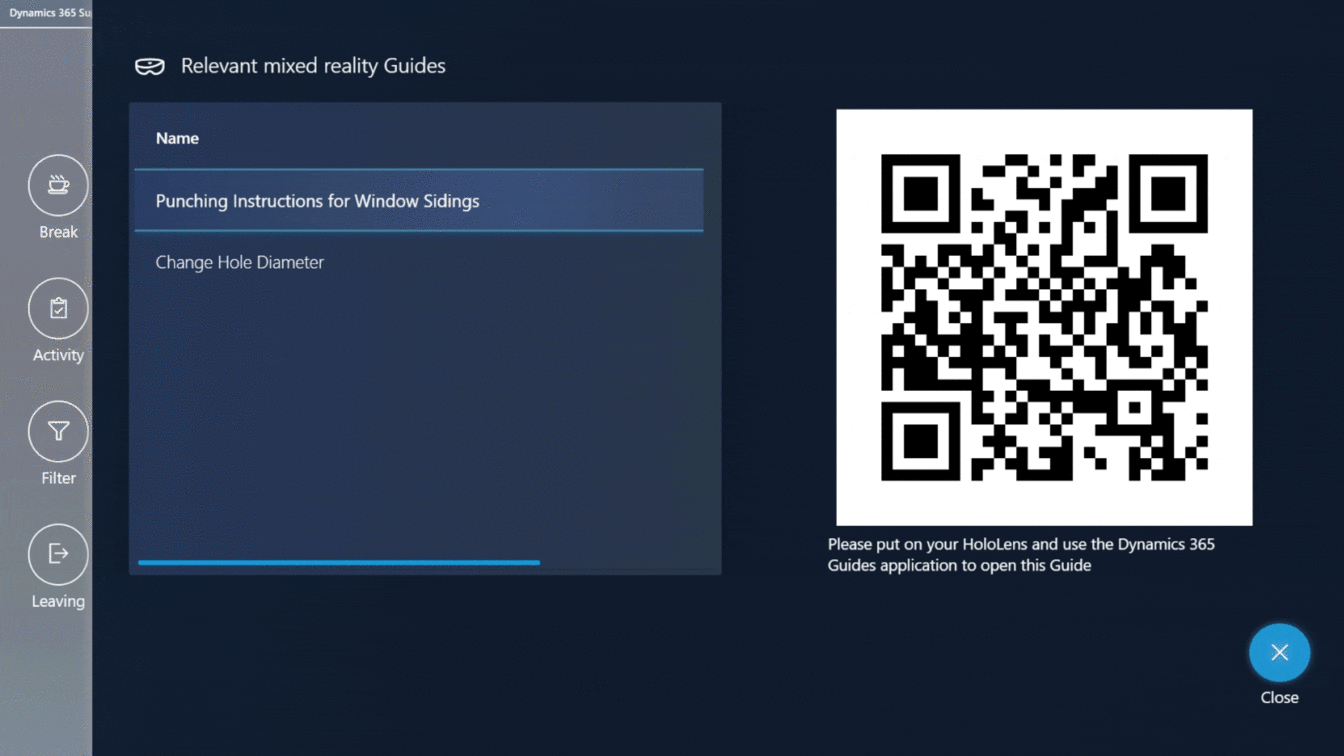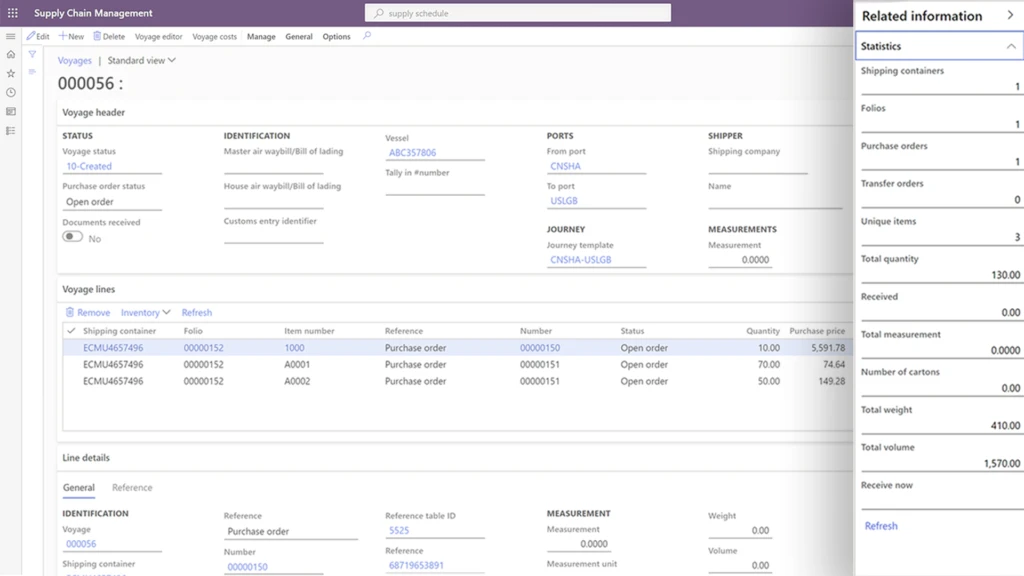
Architecting resiliency in supply chains with Microsoft Dynamics 365
Major shocks to supply and demand over the course of the pandemic have exposed the fragility and vulnerabilities of the global supply chain. One silver lining is the realization, across industries, that a more agile approach is needed. To stabilize supply chains, whether localized or on a global scale, every organization must architect resiliency into their supply chains, scaling operations to meet customers’ needs, and proactively overcome disruptions to ensure business continuity and operate profitably.
This year, at Hannover Messe Digital Edition, we are showcasing new Microsoft Dynamics 365 capabilities to help companies easily scale production and distribution, keep critical processes running, and ensure continuity on the frontlines of manufacturing. Learn more about how Microsoft Cloud for Manufacturing is helping create a more resilient and sustainable future through open standards and ecosystems.
Looking back to move forward: The ripple effect of semiconductor shortages
The ripple effect created by semiconductor shortages in the past year underpins the need for greater agility and resilience across supply chains. As demand for automobiles slowed down at the beginning of the pandemic, automobile manufacturers stocked less inventory of critical semiconductor components to keep operational costs low. During the same period, demand for consumer electronics like computers and tablets grew due to the surge in remote work and online schools. As a result, the same semiconductor manufacturing company that was supplying raw materials to automobile manufacturers increased its allocation to consumer electronics manufacturing companies.
When the demand for automobiles started to rise again in the latter part of 2020, automobile manufacturers struggled to ramp up production to meet demand due to shortages in critical semiconductor components, resulting in decreased revenue and temporary plant closures. To strengthen the supply chains of these critical raw materials and wither any geopolitical storms that can disrupt the supply chain for critical components coming from Asia and Europe, organizations worldwide have started to reconfigure their supply chain network and build new agile factories.
How Microsoft is helping to create more agile, resilient supply chains
IDC’s 2020 Supply Chain Survey1 explored how companies would manage risk and enable supply chain visibility to achieve supply chain resiliency. The focus for risk and visibility from most respondent companies were primarily in supply chain planning (57 percent) and end-to-end supply chain (56 percent) including visibility into factory (39 percent). The tools that the companies expected to use to enhance visibility includes best of breed and edge supply chain application, enterprise collaboration tools, specialized BI and analysis tools, and supplier or customer portal and workflow management solutions—solutions that align to our focus areas of innovation to help organizations architect resiliency into every level of the business, from supply chains to distribution to finance and service.
At Hannover Messe Digital Edition, we are also showcasing the new cloud and edge scale unit add-ins for Microsoft Dynamics 365 Supply Chain Management, which were previewed in October 2020, that enables companies to easily scale production and distribution during peaks and keep critical processes running at high throughput on the edge.

We are also showcasing how manufacturers can use Mixed Reality with Dynamics 365 Supply Chain Management by integrating with Microsoft Dynamics 365 Guides. This enables manufacturers to reskill and cross-skill the frontline workers and augment their knowledge while they rapidly change factory layouts and bring new plants online.

Supply chain resiliency in action: Two success stories from the supply chain frontlines
Although the focus is now on resiliency, cost still needs to be controlled, and so simply ordering and holding more inventory is not the answer. What does hold promise is tighter integration and collaboration with both internal and external trading partners, faster access to data, and a new level of transparency and visibility into the end-to-end value chain made possible by digital transformation.
Wonder Cement builds a better foundation by connecting and scaling key business apps
Wonder Cement is a cutting-edge cement manufacturing company that has built its corporate culture on the values of quality, trust, and transparency. The company attributes its success to its relentless focus on customer service coupled with an emphasis on technological superiority.
Headquartered in Udaipur, Rajasthan, Wonder Cement operates three integrated cement plants and two grinding plants, with another scheduled to be online in the first quarter of 2021. Underpinning their success and growth is a reliance on innovative data technologies that enable them to maintain close connections with their markets and operations.
Wonder Cement recently brought wide-ranging process improvements to its business through the implementation of Microsoft Dynamics 365. The company is creating an improved foundation by connecting and scaling its most critical business apps. In the process, Wonder Cement has lowered inventory costs and reduced the time spent on transferring data between disparate systems. The company now has new visibility into its data and the resilience to succeed in the years ahead.
“We save 80 to 85 percent of the time we used to spend on moving data from the production system to our ERP now that everything runs on Dynamics 365. That’s a huge win for our company.” —Arun Attri, Vice President (IT)
Explore how this customer-first cement company builds a better foundation by connecting and scaling key business apps with Dynamics 365.
CRC Industries aligns finance, operations, and supply chain management globally
CRC Industries has successfully created specialty products for the automotive, industrial, marine, aviation, and other markets for over 60 years. With customers in over 120 countries, seven manufacturing plants, and 26 facilities around the world, CRC has experienced almost continuous expansion over the past six decades.
As CRC grew, several unintegrated business solutions for finance, operations, and supply chain management were pieced together. The result was a mix of diverse systems that couldn’t communicate without significant manual intervention. This led to CRC being unable to take advantage of the cloud’s benefits and instead, having separate systems that reside on-premises at different locations across the globe.
“I consider Dynamics 365 the leading edge of the ERP frontier. Microsoft is listening to the customer and adapting quickly.”—William McLendon, Global Manager Business Applications
In contemplating its future growth plans, CRC realized that its fragmented and disparate solutions were unsustainable. A push to standardize business processes, break down data silos, and create a single source of truth began. After considering other options, CRC selected Dynamics 365 Supply Chain Management.
“We made it our goal to standardize our business systems globally. We wanted to put the company on one enterprise resource planning solution throughout the world and have one way of doing business going forward.”—Brent Laurin, Vice President of Global Operations
Learn more about how this specialty products and formulations company aligns finance, operations, and supply chain management globally with Dynamics 365.
What’s new in Dynamics 365 Supply Chain Management in April
Increase visibility of inbound goods and automate landed cost calculation to maximize profitability
The new landed cost module in Dynamics 365 Supply Chain Management provides an innovative way to streamline inbound shipping by giving users complete financial and logistical control over imported freight, from the manufacturer to the warehouse.
With this visibility, arrivals are predictable, and warehouse planning and efficiency are improved.

Some key business outcomes are:
- Optimize the receiving process: Shipment of inbound orders such as purchase orders or transfer orders can be defined and organized into various transportation legs that will provide immediate visibility of stock delays that might impact customer deliveries.
- Help organizations predict costs: Automatic cost calculations can be configured for various transportation modes, duties, and other fees incurred to get a product to the warehouse.
- Help reduce administration and costing errors: Simulate shipping scenarios to predict a standard cost price for an item.
Città uses Dynamics 365 Supply Chain Management to streamline sourcing, procurement, and management of inbound goods in transit. Now, staff members know when to replenish inventory at each store in a timely manner so that products are in stock and aren’t overstocked.
Streamline and automate rebates and royalty management to increase your bottom line
Rebates and royalty have a significant impact on a company’s margin. The rebate calculation complexity and post-event timing of claims can cause challenges for businesses to accrue, automate and track the rebate in a cost-effective way.
Rebate management provides a central place to manage customer rebates, customer royalty, or vendor rebates. It will help to identify and trace the eligibility against overlapping and concurrent agreement with accuracy and automate the claim and payment process.

Some key business outcomes are:
- Centralize, streamline, and automate rebates and royalty program management with customers and vendors. It supports tiered pricing and volume rebates.
- Increase sales, improve margins, and remain competitive with simplified trade planning and real-time reporting such as spend versus rebates.
Overcome disruptions due to quality issues and obsolete parts to keep production running
Strong product data management, formula management, and change tracking of formulations are required to succeed in a world of constantly shrinking product lifecycles, increased quality and reliability requirements, and increased focus on product safety. This helps streamline and reduce the cost of managing product data, reduce errors in production, reduce waste when making design changes, and enable new formulas to be introduced in a controlled way.
Now, companies can manage changes in your process manufacturing master data, including formulas, planning items, co-products, by-products, and catch weight items.
Some key business outcomes are:
- Ensure compliance and on-time delivery by quickly responding to changing customer or supplier specifications, regulations, and safety standards, and seamlessly managing multiple formulations.
- Minimize disruptions caused by quality issues and obsolete ingredients by quickly assessing the impact and adjusting formulas through change management to ensure production lines are running every day.
Empower frontline workforce to work with confidence and improve overall warehouse operating efficiency
The warehouse management mobile application includes a fresh, contemporary design that is intuitive, easy to use, and supported by robust enhancements to core warehouse management logic that streamline processing. The solution is designed to help workers be more efficient, productive, and better able to complete work accurately.

Some key business outcomes are:
- Improved worker efficiency with the most important information made easy to read and in large font, large input controls to quickly dial in quantities, and saved worker preferences and device-specific settings that can be managed centrally.
- Faster ramp-up of new workers with clear titles and illustrations for each step and full-screen photos to verify product selections.
- Improved ergonomics with a high-contrast design that provides clear text even on dirty screens, custom button locations to match each worker’s grip, device, and handedness, large touch targets that make the app easy to use with gloves, and possibilities to scale font and button size independent of each other.
- Alignment with Fluent Design System visual style and interaction, a similar user interface across Dynamics 365 Guides, and production floor execution interface.
Learn more about Dynamics 365 Supply Chain Management
Learn more about Dynamics 365 Supply Chain Management, how to build resilience with an agile supply chain, or if you are ready to take the first step towards implementing one of the most forward-thinking enterprise resource planning (ERP) solution available, then contact us to see a demo or start a free trial.
Find out what’s new and planned for Dynamics 365 Supply Chain Management and listen to our recent podcast “Preparing for your supply chain’s next normal” with Frank Della Rosa and Simon Ellis.
Learn how Microsoft Cloud for Manufacturing is helping create a more resilient and sustainable future through open standards and ecosystems.
1 – IDC White Paper, sponsored by Microsoft, title, doc # US47207320 published in January 2021 – “A New Breed of Cloud Applications Powers Supply Chain Agility and Resiliency.”



